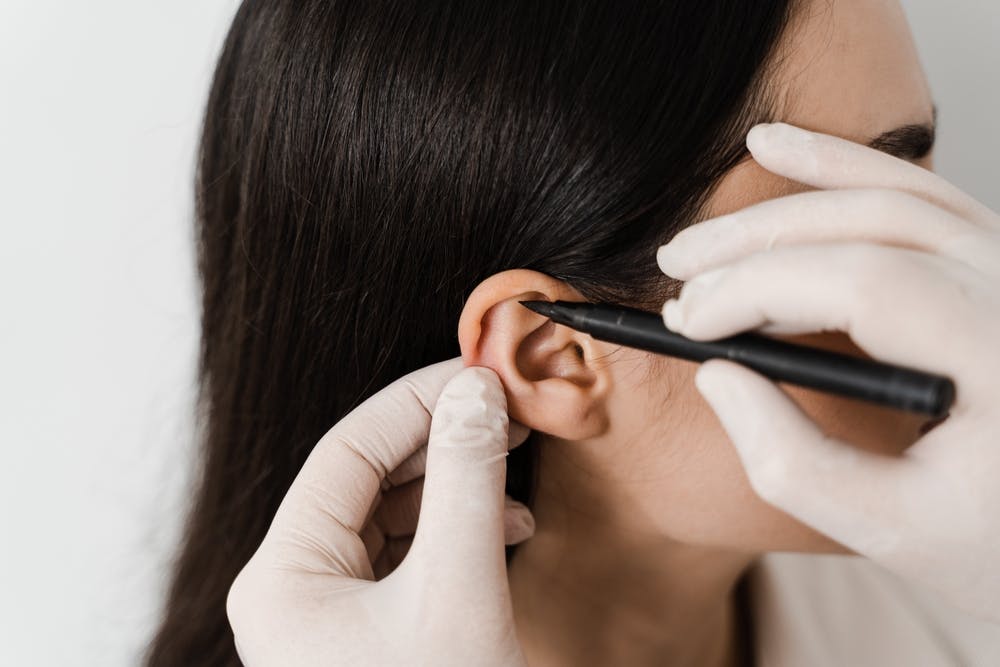
Are you planning for an Otoplasty, otherwise known as ear correction surgery? Understanding the process of post-operative care is crucial to ensure a successful recovery. This article will dive deep into the healing process, self-hygiene, follow-ups with your surgeon, potential lifestyle modifications, and long-term care. Continue reading and empower yourself with knowledge for a smooth recovery process.
Understanding Your Post-Otoplasty Journey
Before embarking on your post-otoplasty journey, it is important to understand what you can expect. During the initial consultation with your board-certified plastic surgeon, they will discuss the surgery in detail, including any risks and potential complications. They will also help you set realistic expectations for recovery and results. Cosmetic ear surgery reshapes the ears to create a more balanced appearance with other facial features. Otoplasty procedures involve surgical incisions in or around the ear canal, with stitches placed to hold the cartilage in its correct position. After the procedure, your surgeon will likely place an external headband over your ears to keep them in their new shape until you have healed. The days after surgery may be uncomfortable, however, this is normal and should not be cause for alarm. Most people experience full recovery within a few weeks of their procedure; however, this varies from person to person, depending on their individual healing process.
The Healing Process: Immediate Steps After Surgery
Following your otoplasty, the healing process is pivotal for recovery. An incision’s care gets crucial attention as we specifically wrap it with a compression bandage to curb swelling and facilitate healing. We prescribe specific medications to manage pain and prevent infections in the week after surgery.
A follow-up consultation is scheduled promptly to assess progress and adjust care as necessary. The anesthesia given during surgery necessitates refraining from heat exposure or strenuous activities as it can interfere with the healing process. The optimal care includes a thorough understanding of the dos and don’ts after the operation. You can witness successful recovery by strictly adhering to the aftercare plan.

Managing Discomfort and Pain
It’s key to managing post-operative discomfort and pain effectively. Taking prescribed pain medication as recommended by your surgeon significantly reduces discomfort. Aim for a balance, using medication to ease pain without over-reliance, which could lead to complications.
Personal Hygiene Post-Otoplasty
Maintaining personal hygiene is crucial after otoplasty, but carefulness around the surgical site is vital. Avoid touching the head, especially the ears, to prevent pressure on the site. Wash your hair gently and protect the ear canal from water to avoid infections. The application of doctor-prescribed ointment can help keep the area clean and facilitate healing. Following proper hygiene practices can ensure a smooth recovery journey.
Follow-up Appointments and Communication with Your Surgeon
Maintaining open communication with your surgeon, particularly a facial plastic surgeon, is of utmost importance during the weeks after surgery. Scheduled follow-up appointments allow your surgeon to assess healing progress and prevent potential complications. Regular consultations also offer an opportunity for patients to voice any concerns or questions they might have regarding the recovery process. Hence, it’s crucial to commit to these appointments and keep a steady line of discourse with your surgeon to ensure a smooth recovery and optimal results.
Recognizing the Signs of Potential Complications
A week after surgery, a routine healing process usually ensues after surgical procedures. However, signs of complications like excessive pain, redness, swelling, or any foul-smelling discharge should not be ignored, as they could indicate an infection. Always consult your doctor when you notice unusual or worsening symptoms for immediate medical attention. Be aware of your healing process and ensure communication with your medical team.
Lifestyle Changes for a Smooth Recovery
During your recovery, taking a breather from normal activities and concentrating on achieving optimal wellness is crucial. As part of your plan, avoid any strenuous activity, including heavy lifting and other forms of rigorous activity. This helps guard against complications and speeds up recovery. Physical activity must be limited and slowly reintroduced as healing progresses, making sure your body gets plenty of rest. In time, you will find the right balance between rest and activity, facilitating a smooth and effective recovery process.
Dietary Recommendations and Restrictions
Your diet plays a vital role in the healing process, especially the week after surgery. Ensure you maintain a healthy diet rich in proteins and vitamins. Avoid foods that require heavy chewing; instead, opt for easier, softer foods. Remember to discuss your dietary plan and medications with your surgeon to expedite your recovery.
Navigating Social and Work Life During Recovery
During the healing process, embrace your broad headband as a tool, not a hindrance. It provides post-ear surgery support acting as a constant reminder of the care needed to optimize recovery.
Managing work and social settings might test your capabilities, but it is crucial to keep in mind that your well-being comes first. Pressurizing situations could be postponed until full recovery, proving that patience is a key component during this period.
Long-term Care for Sustained Results
After your otoplasty recovery, maintaining the shape of your ears requires long-term care. To achieve sustained success from this cosmetic procedure, it’s crucial to heed post-operative instructions. Regularly using a headband at night for several months can be beneficial for ear-pinning aftercare. It assists in sustaining ear position and protection against inadvertent mechanical forces while you sleep. Thus, continuous care plays a pivotal role in ensuring the desired outcomes and mitigating post-otoplasty complications.
Conclusion: Achieving the Best Results Post-Otoplasty
Ultimately, patients should expect to achieve optimal results from their otoplasty by closely adhering to their surgeon’s instructions. Compliance is key, even during the process of waking up from anesthesia. Remember, this cosmetic surgery was performed not only to improve your physical appearance but also to boost your self-esteem and overall satisfaction with your appearance.
Throughout this process, seeking expert advice will optimize your recovery and help prevent health complications. Dr. Mark Glasgold, a renowned expert, is ready to guide you, providing personalized advice and critical insights. Don’t hesitate—schedule a consultation today with Dr. Glasgold, your partner toward a hassle-free recovery.



